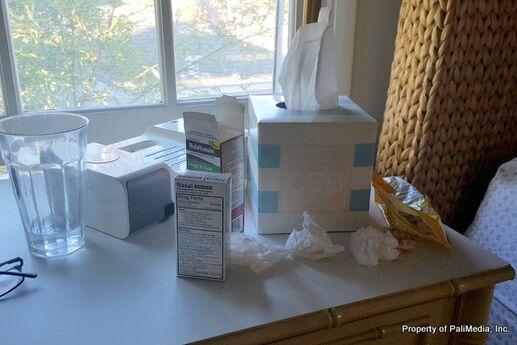5 Immune-boosting Recipes
Cold and flu season is here, which means that your family is fending off viruses right and left. But the one thing that your kids do as nearly as often as encounter germs is eat. And, lucky for you, each meal is a new opportunity to build up their defenses with foods that promote a strong, healthy immune system. Here, we've put together a day's worth of easy, delicious meals and snacks packed with cold- and flu-fighting nutrients.
Breakfast: Honey-nut Oatmeal
Stick-to-your-ribs oats are loaded with soluble fiber, which does more than fill you up: A 2010 study from the University of Illinois shows it also assists in turning on immune cells that help the body fight infection. Top that bowl of steel-cut, rolled or instant oatmeal (they all pack roughly the same nutritional value) with raw almonds -- chemicals in their skin prevent viruses from spreading in the body, say Italian scientists. To sweeten the deal for your kids, drizzle it with antibacterial honey and add a dash of antioxidant-packed cinnamon. Serves 1.
- 1/2 cup rolled oats
- Water
- 1/4 cup raw almonds
- 1 tablespoon honey
- Cinnamon to taste
Prepare oats with water to desired consistency. Chop almonds and sprinkle on top of oatmeal. Add honey and cinnamon.
Lunch: Sun-sadillas
Instead of a PB&J, try an SB&J using sunflower butter, which contains twice as much of the immune-boosting mineral zinc and more heart-healthy monounsaturated fats. Smooshed between whole-wheat tortillas and served with vitamin C-rich fruit salsa, these kid-friendly finger sandwiches take minutes to whip up. (Just remind your kids to wash first, since they'll be eating with their hands.) Serves 1.
- 2 small whole-wheat tortillas
- 1 tablespoon sunflower butter
- 1/2 kiwi
- 1/2 pear
- 2 strawberries
Spread one tortilla with sunflower butter. Top with second tortilla and cut into triangles. Dice kiwi, pear and strawberries and toss together and plate with the sandwiches.
Snack: Berry Healthy Smoothie
Research shows the probiotic bacteria in yogurt can help increase your body's number of white blood cells, which fight infection. For a one-two cold-fighting punch, make your smoothie with nutrient-rich fruit. Serves 2.
- 1 cup low fat plain yogurt
- 3/4 cup frozen strawberries
- 1 banana
- Low fat milk or orange juice
Blend the first three ingredients together. Add milk or orange juice until the desired consistency is reached.
Dinner: Superhero Stromboli
This crowd-pleasing supper turns pizza inside out, leaving lots of room for antioxidant-packed veggies. The cold-busting stars of the show: garlic (rich in the cold-fighting compound allicin) and mushrooms (which help the body fend off invaders, reports a study in the journal BMC Immunology). Serve with vitamin C-rich tomato sauce for dipping. Serves approximately 4.
- Store-bought whole-wheat pizza dough
- 5 cloves garlic, crushed
- 2 cups button mushrooms
- 3 cups baby spinach
- Olive oil
- 1/2 cup shredded low-fat mozzarella
- 2 cups tomato sauce
Crush garlic and dice mushrooms. Sautee both ingredients together in a drizzle of olive oil until browned. Add spinach and toss until wilted; set aside. Roll out pizza dough lengthwise until it forms a thin rectangle. Spread vegetable mixture in middle and sprinkle with cheese. Fold over edges of the dough until veggies and cheese are covered entirely; press down edges to seal. Brush lightly with olive oil and bake at 400 F for 30 minutes, or until dough is golden brown. Slice and serve with warmed tomato sauce for dipping.
Dessert: Superfruit Skewers
Your kids can help make these immunity-boosting kebabs, which are an art project and dessert rolled in one. Challenge your family to see who can get the most colors on their stick -- the more hues, the greater the disease-fighting antioxidant quotient. Serves 4.
- 1 kiwi, sliced
- 1 mango, cubed
- 1 banana, sliced
- 1/2 cup red grapes
- 1 orange, sliced and halved
- 4 wooden skewers
Spear each fruit one by one, alternating until all are used. Start over again. Create a pattern with your favorites. Feel free to add any other fruit your family enjoys; all contain important antioxidants to keep your immune systems running strong!
Photo by Alex Motoc on Unsplash
Like this article? Get more by following us on Facebook at Beauty & Confidence.






